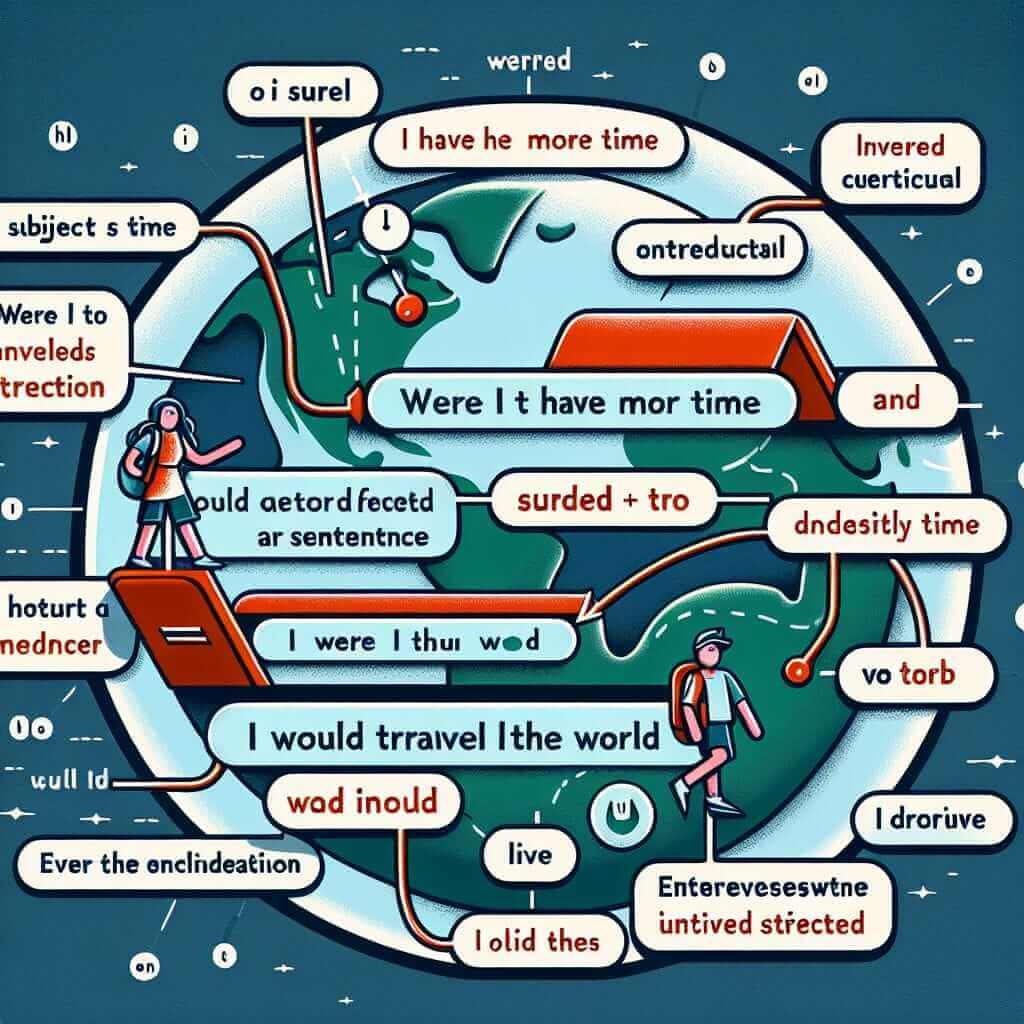Many IELTS students find themselves perplexed by the phrase “Were I to organize, it would be different” and its unusual grammatical structure. This construction, known as an inverted conditional, is a powerful tool for expressing hypothetical situations in a formal and nuanced way. While not as common as basic conditional sentences, mastering this structure can significantly enhance your writing and speaking scores, especially in demonstrating a wider range of grammar for a higher band score.
Let’s look at some examples of how inverted conditionals can be used across different sections of the IELTS exam:
Speaking Part 2: Describe a time you had to organize an event. What would you do differently?
“Were I to organize the event again, I would definitely delegate more tasks. I took on too much responsibility and ended up feeling overwhelmed.”
Writing Task 2: Some people believe that technology has made our lives more stressful. To what extent do you agree or disagree?
“Were technology to disappear completely, it is unlikely that our stress levels would actually decrease. Many sources of stress, such as work pressures and social expectations, are unrelated to technological advancements.”
Listening:
You might hear a speaker say: “Had I known about the traffic delays, I would have left earlier.”
These examples demonstrate the versatility of inverted conditionals in various contexts. Now, let’s delve deeper into their structure and usage.
Understanding Inverted Conditionals
Inverted conditionals are essentially a more formal and literary way of expressing hypothetical situations. They are often used to convey a sense of formality, politeness, or a low degree of probability.
Structure and Tense Usage
The key to recognizing and using inverted conditionals lies in their unique structure:
Form: Were/Had + Subject + to + Verb (base form)… , Subject + would/could/might + Verb (base form)
Breakdown:
- “Were” or “Had”: These auxiliary verbs are placed at the beginning of the conditional clause, inverting the typical subject-verb order. “Were” is used for hypothetical situations in the present or future, while “Had” is used for hypothetical situations in the past.
- Subject-Verb Inversion: Notice how the subject and verb are inverted (“Were I” instead of “If I were”). This inversion is a hallmark of this conditional structure.
- Comma Usage: A comma is used to separate the conditional clause from the main clause.
- Main Clause (Result): The main clause describes the outcome or consequence if the condition were to be met. It typically uses conditional modals like “would,” “could,” or “might.”

Applying Inverted Conditionals in IELTS
1. Expressing Hypothetical Situations
Inverted conditionals are highly effective for expressing hypothetical scenarios, particularly in Writing Task 2 essays where you need to discuss possibilities and their consequences:
- Example: “Were the government to invest more heavily in renewable energy, the country could significantly reduce its carbon footprint.”
2. Adding Formality and Sophistication
Using inverted conditionals, especially in your writing, can demonstrate a strong command of grammatical structures and enhance the overall sophistication of your language.
- Example: “Had I been informed about the deadline extension, I would have submitted my application on time.”
3. Discussing Past Counterfactuals
When you want to talk about hypothetical situations in the past and their imaginary outcomes, inverted conditionals with “Had” are particularly useful.
- Example: “Had Alexander Fleming not discovered penicillin, countless lives would have been lost to bacterial infections.”
Common Mistakes and How to Avoid Them
While inverted conditionals are powerful, they are also prone to errors if not used carefully. Here are some common pitfalls to watch out for:
-
Incorrect Verb Tense: One of the most common mistakes is using the wrong tense in either the conditional clause or the main clause. Remember to stick to the structure outlined earlier.
- Incorrect: “Were I to have studied harder, I would have passed the exam.”
- Correct: “Had I studied harder, I would have passed the exam.”
-
Omitting the Inversion: Forgetting to invert the subject and verb in the conditional clause is another frequent error.
- Incorrect: “If I were to win the lottery, I would travel the world.”
- Correct: “Were I to win the lottery, I would travel the world.”
Conclusion
Mastering inverted conditionals like “Were I to organize, it would be different” can significantly enhance your grammatical range and help you achieve a higher band score in the IELTS exam. By understanding the structure, practicing its application, and being mindful of common mistakes, you can confidently incorporate this sophisticated grammatical tool into your writing and speaking, showcasing a nuanced command of the English language.